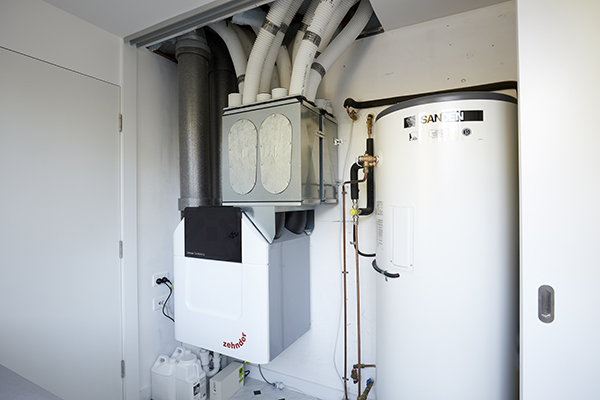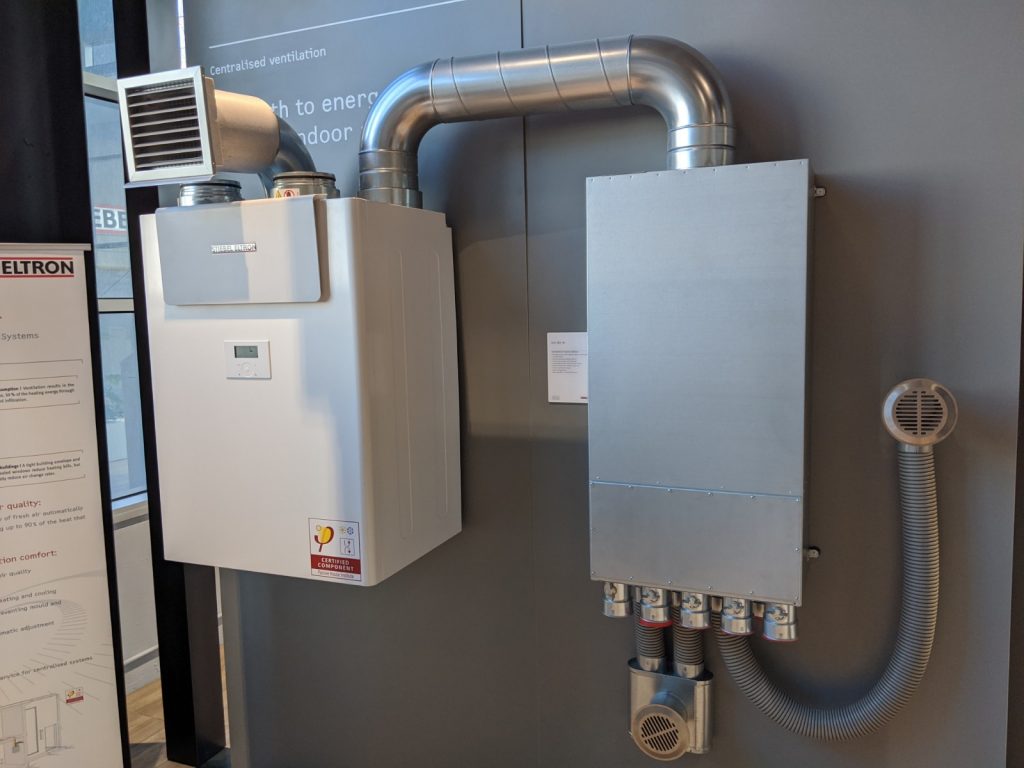HRV For Beginners: What You Need to Know
Wiki Article
The All-Inclusive Overview to the Uses of Heat Recovery Ventilation in Modern Buildings
Heat Recovery Ventilation (HRV) systems stand for a considerable advancement in developing modern technology (HRV Heat Recovery Ventilation). They offer a technique for exchanging stale indoor air with fresh outdoor air while reducing energy loss. This strategy not just boosts interior air top quality yet also adds to power effectiveness in both property and commercial buildings. Understanding the numerous applications and benefits of HRV can disclose its vital duty in contemporary style and sustainability initiatives. The ramifications of this modern technology are worth exploring betterComprehending Heat Recovery Ventilation Systems

Many modern structures focus on power effectiveness, understanding heat recuperation ventilation (HRV) systems is crucial for optimizing interior air quality and minimizing energy consumption. HRV systems function by moving heat from stale indoor air to inbound fresh air, effectively preserving comfortable indoor temperatures while decreasing power loss. These systems contain a warm exchanger, followers, and ductwork that help with the blood circulation of air. Throughout winter months, HRV units catch and reuse warm from the outward bound air, while in summer, they can help cool down inbound air. By continually exchanging air, HRV systems also lower moisture and the concentration of indoor pollutants. Proper installation and upkeep of HRV systems are important for their efficiency and effectiveness in boosting total building efficiency and comfort.
Benefits of Heat Recovery Ventilation
Heat recovery ventilation systems use numerous benefits that boost both power efficiency and interior air top quality in contemporary buildings. By capturing and reusing energy from exhaust air, these systems considerably lower heating & cooling prices, resulting in reduced power intake. They keep a consistent flow of fresh outdoor air, minimizing the risk of interior air pollutants and allergens. This continual exchange aids regulate humidity degrees, protecting against mold development and ensuring a much healthier living environment. Furthermore, HRV systems add to sustainability goals by lowering overall carbon impacts. Their capacity to optimize air flow without giving up thermal convenience makes them a beneficial enhancement to modern building design, advertising both financial and ecological benefits.Applications of HRV in Residential Buildings
As homeowners increasingly prioritize power effectiveness and interior air high quality, the applications of warmth recuperation ventilation (HRV) systems in domestic structures have actually become more prevalent. HRV systems are specifically helpful in tightly secured homes, where preserving fresh air blood circulation is necessary for protecting against wetness accumulation and indoor toxins. They properly move heat from outward bound stagnant air to incoming fresh air, minimizing power expenses connected with heating & cooling. Additionally, HRVs can improve comfort levels by managing moisture and temperature level. They are additionally adaptable for various household layouts, including single-family homes and multi-unit buildings. In general, incorporating HRV systems supports sustainable living practices while making certain a much healthier interior environment for occupants.HRV in Commercial and Industrial Settings
In industrial and industrial settings, the execution of warmth recuperation air flow (HRV) systems has check out here actually ended up being significantly crucial for enhancing energy efficiency and preserving air quality. These systems successfully transfer heat from exhaust air to incoming fresh air, decreasing the demand for extra home heating or cooling. This not only reduces power expenses yet additionally contributes to sustainability campaigns. Industries such as manufacturing, warehousing, and office complex benefit substantially from HRV systems, as they aid control temperature level and humidity degrees, making certain a comfy and effective atmosphere. HRV systems aid in removing pollutants and excess dampness, improving indoor air quality. As guidelines around air quality end up being stricter, the fostering of HRV modern technology is most likely to grow, making it a critical element of modern commercial and commercial facilities.Future Fads in Heat Recovery Ventilation Modern Technology

Regularly Asked Concerns
Just How Does Heat Recovery Ventilation Influence Indoor Air Quality?
Heat recovery ventilation considerably boosts indoor air quality by continuously exchanging stagnant indoor air with fresh outdoor air while recouping power. This process reduces pollutants, maintains suitable humidity levels, and assures a much healthier environment for residents.Can HRV Equipments Be Installed in Existing Structures?
HRV systems can without a doubt be set up in existing structures. Retrofitting might need adjustments to ductwork and ventilation formats, however it substantially boosts power efficiency and interior air top quality, making it a viable option for older frameworks.What Upkeep Is Needed for HRV Solutions?

Exist Particular Climates Where HRV Is A Lot More Efficient?
Heat recovery ventilation systems are see this specifically reliable in environments with considerable temperature level distinctions in between seasons. These systems enhance energy performance by recuperating heat from exhaust air, making them suitable for both cold and moderately warm settings.Just How Do HRV Solutions Affect Energy Expenses?

Report this wiki page